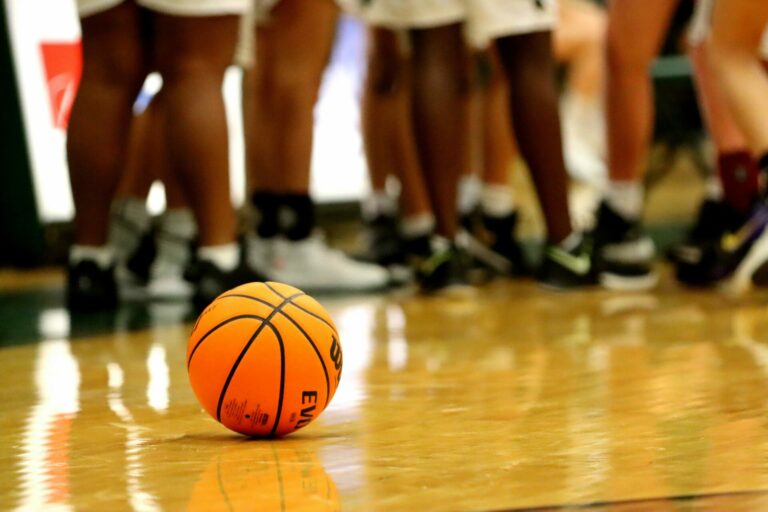Tim Gallwey’s Inner Game and Self-Directed Learning
- While self-doubt, nervousness, and lapses in concentration can keep a player from winning, they can also be overcome.
- You can master almost everything in a short amount of time, while being "in the flow.”
- Focus on the task at hand and allow your body and mind to learn without judgment or commentary.
Carol Wilson is the founder of Culture at Work and author of “Performance Coaching: A Complete Guide to Best Practice Coaching and Training.” Over her career, Wilson has worked with many brilliant business minds, such as author Tim Gallwey’s theory of the “Inner Game.”
Below, Wilson breaks down Gallwey’s philosophy, and explains why he stresses the necessity for the coach to step back and allow people to learn for themselves, whether they be managers, sports players or children. The key is, “self-directed learning”, which is achieved by keeping the focus on the coachee not the coach:
“In sports, I had to learn how to teach less, so that more could be learned. The same holds true for a coach in business.” — Tim Gallwey
Wilson also shows how leaders can apply Gallwey’s coaching philosophy to help students achieve higher levels of performance by identifying limiting beliefs, and implementing self-directed learning.
Discovering The "Inner Game"
In 1971, Tim Gallwey was working as a tennis coach. Having captained the tennis team at Harvard, he was on sabbatical before finding a serious job. One day he noticed that when he left the court briefly, a student who had been stuck with a technical problem had improved, without his help, by the time he returned. He began to realize that people could teach themselves better while working alone than when being given conventional sports instruction by a coach.
Tim started to develop a new coaching philosophy, which focused on enhancing the student’s awareness of what was happening with the ball, the racket, and the student’s own body. He developed a series of questions and instructions to achieve this.
Tim theorized that within every player, and indeed in every one of us, there is a “Self 1” and a “Self 2”. Self 1 is always commenting on and critiquing everything that Self 2 does—criticizing every action and creating self-doubt. Self 1 not only reminds Self 2 of previous failures, but creates the tension and fear that tends to beset us when we are confronted by a challenge. In fact, Self 1 is creating the worst of the challenges, yet manages to throw all the blame onto Self 2, with inner dialogue like, “you really blew that; you’ll never be any good at this.”
He summed up the effect of Self 1’s interference in the theory:
(P=p-i; Performance = potential – interference)
Self 2, on the other hand, is the part of us that actually engages in a given activity—think of Self 2 as the body, and Self 1 as the mind.
Self 2 can learn and retain information quite well, and can even enter a flow state where performance quality improves tremendously. When Self 2 is allowed to learn and act without Self 1’s nagging, self-directed learning is not only possible, but is incredibly effective.
This is where “the Inner Game,” is introduced. How can we silence Self 1, so that Self 2 can flourish?
Gallwey found a way of getting around Self 1’s interference with instructions like, “focus on the seams of the ball,” instead of, “try to hit it in the center of the racket.”
He discovered that directing the student’s attention towards something inconsequential in terms of successful playing was a way of shutting out the nagging voice of Self 1. By making his students focus on one specific facet of what they were doing, Self 2 was able to thrive, and his pupils’ techniques improved dramatically.
Self 2 In Action
I witnessed this principle in action at a demonstration with Tim at Queens Club in London. A woman volunteered who had, I think, no experience of tennis at all. Gallwey asked her to bounce a ball with her racket, and asked her to say, “bounce,” when the ball bounced and, “hit” when it came into contact with the racket of either opponent.
The resulting volley lasted for several minutes until Gallwey brought it to an end, and she never missed a ball. Because her focus was absorbed in noticing when the ball bounced or hit her racket, the chattering of Self 1 was silenced and her instincts, intuition and unconscious mind were given full play.
This was a visual exercise, but Tim has also found that listening to the sound the ball makes, and feeling one’s grip on the racket, are also effective in silencing Self 1 and improving focus. Gallwey’s findings here are similar to those made by psychologists in the 1920s with the development of the visual, auditory, and kinesthetic (VAK) learning system, and have even been utilized by coaches at the olympic level.
We have all experienced times when we were “in the zone:” That moment when we played the perfect shot, wrote the right lines, won a deal, or played an instrument. The interference of Self 1’s critical voice is silenced during these times, and Gallwey has developed techniques to help people attain this state. Gallwey realized that the real obstacles to playing well lie in the player, not in the skill of the opponent and is famously quoted as saying:
“The opponent within one’s own head is more formidable than the one on the other side of the net.”
Tim expounded his theories in the bestseller, “Inner Game of Tennis,” and went on to write four more books applying the Inner Game to golf, skiing, music and, most notably, “The Inner Game of Work,” written after business managers had started to pick up on the techniques, and asked how they could be applied in the workplace.
Tim’s first corporate Inner Game assignment was at AT&T, where he was asked to improve courtesy levels in customer service. He agreed to take on the challenge on condition that he did not have to mention the word, “courtesy.”
To implement his coaching philosophy, he treated the customer’s voice as the tennis ball, and operators were asked to identify its tone—were they loud, soft, angry or nervous—and recognize the tones in their own voices. Then, they measured the qualities on a scale of 1-10.
The process worked on a number of levels, not only improving the relationships between operators and customers, but providing the operators with a more enjoyable workplace, because what they were doing seemed like a game.
Gallwey’s coaching philosophy consists of several essential parts and core principles, such as identifying “critical variables,” and practicing non judgemental awareness. Critical variables aren’t always the most obvious ones, and simply asking questions brings about an awareness of what is happening in any situation; physically, mentally and emotionally.
For example, if you find your neck hurts because you have been driving for too many hours, and you pay attention to what needs adjusting, whether position or level of tension, the pain will ease.
An emotional application might be when you feel angry or resentful at someone else’s behavior; just becoming aware of the effects this is having on you gives you the mental skills to function alongside the feeling without being overwhelmed by it. I have found this particularly useful for clients working in situations where they cannot do much about another person’s behavior, for example, having a boss who is a bully.
Although Gallwey’s work has contributed on a fundamental level to the field of coaching, these days he is concerned that sometimes the coach’s own performance becomes their focal point, instead of the client’s.
“In sports, I had to learn how to teach less, so that more could be learned. The same holds true for a coach in business.” – Tim Gallwey











